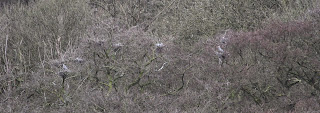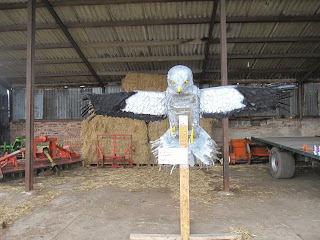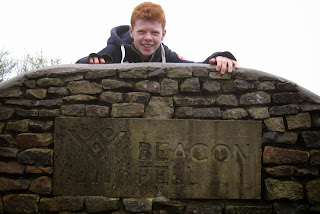Accord to the BTO we have lost we have lost over half of our breeding Cuckoos during the last twenty-five years. They are red status bird.
Up until yesterday, I had never had a proper view of one, so you can imagine how excited I was when not one, but 4 Cuckoos put in an appearance at Frodsham Marsh. I had read on the Frodsham Marsh blog that the Cuckoos were back, so my plan for yesterday afternoon was to find them.
We arrived at the marsh and headed straight for the Weaver Bend. We were only about 3 minutes into our walk when I looked across the meadow and saw two medium sized birds sitting about 4 fence posts away from each other. I grabbed my bins and sure enough it was a male and female Cuckoo.
I fumbled with the scope and tried to get the tripod legs out as quick as possible for a closer look, but as a looked up I saw them both flying off along the fence line and then across the river and over the bank on the other side. Well at least I'd got a glimpse.
With their striped markings they looked very similar to birds of prey as they flew low across the grass. There is some great research on the University of Cambridge website about Cuckoos resembling birds of prey to frighten nesting birds and get them to flee the nest. This of course gives them chance to go in and lay their egg in the nest.
However, our Cuckoo adventure was only just starting. We were on the bank of the Weaver listening to Warblers and then we heard the Cuckoos calling from across the river, what a great sound to hear.
Swifts were flying between us and about 200 Black tailed Godwits were feeding on the muddy banks of the river. The Cow Parsley we were walking through was full of Drinker Moth caterpillars, in fact they were everywhere - a perfect sized snack for a Cuckoo maybe.
We turned to head back to the car, and as we did I spotted him. A stunning male Cuckoo sitting low on the fence. The scope was straight on him and we watched him for ages as he dropped in to the undergrowth time and time again, returning to the fence with a beak full of.......yes...Drinker Moth caterpillars.
Male Cuckoo - My phone scoped picture
The Cuckoos on the other side of the river were still calling, so this was a new one for the day. The views of him were amazing.
Above two pictures are mum's.
Eventually he was flushed by some walkers and moved further off and out of site. We headed back to the car feeling lucky to have seen something special. But it didn't end there. Later as we were driving back along the other side of the marsh, we saw another female sitting up on the fence by No6 tank.
Frodsham Marsh is such a great habitat for the Cuckoos, with Reed Warbler and Meadow Pipits nesting in good numbers and all the wild flower, over grown areas filled with caterpillars. I hope this doesn't change with the building of the 21 wind turbines.
The decline of the Cuckoos is worrying. The BTO's Cuckoo tracking programme is helping to understand all about the Cuckoos annual cycle to try and work out the reasons for the steep decline.
You can read all about the BTO's Cuckoo Project here.























